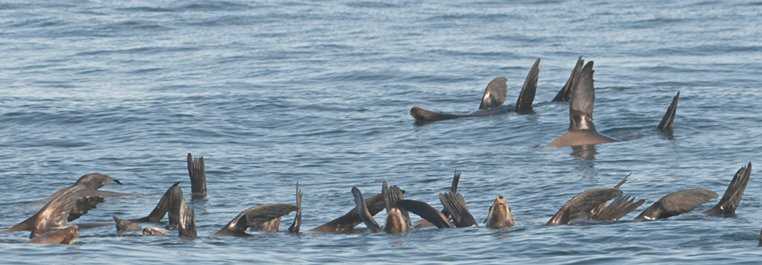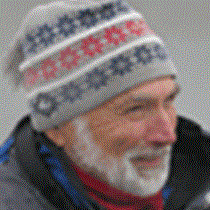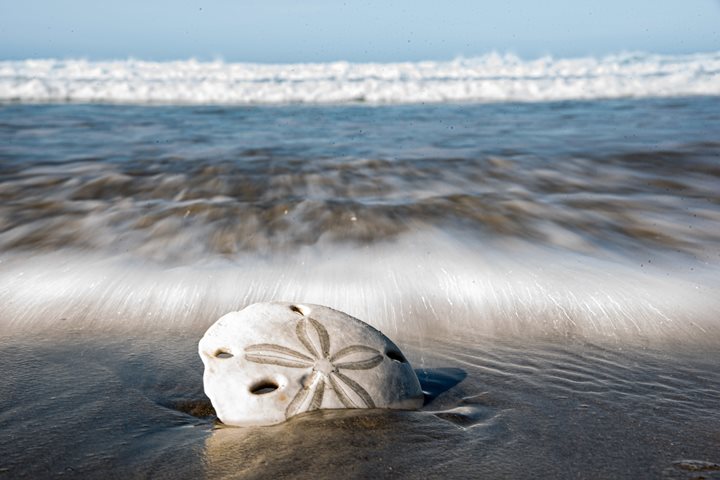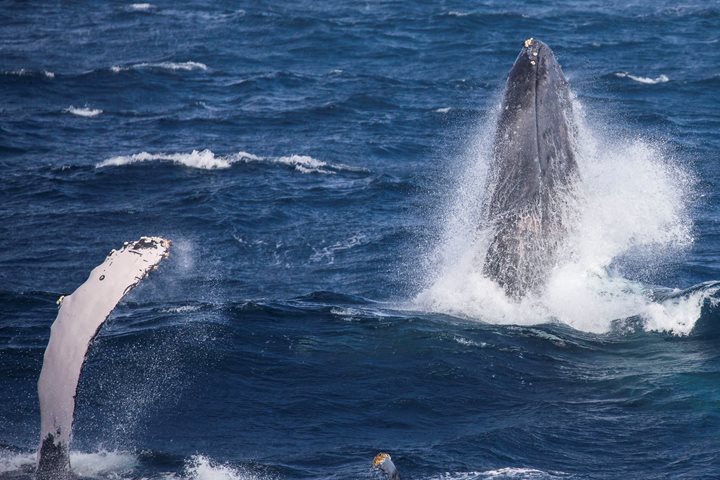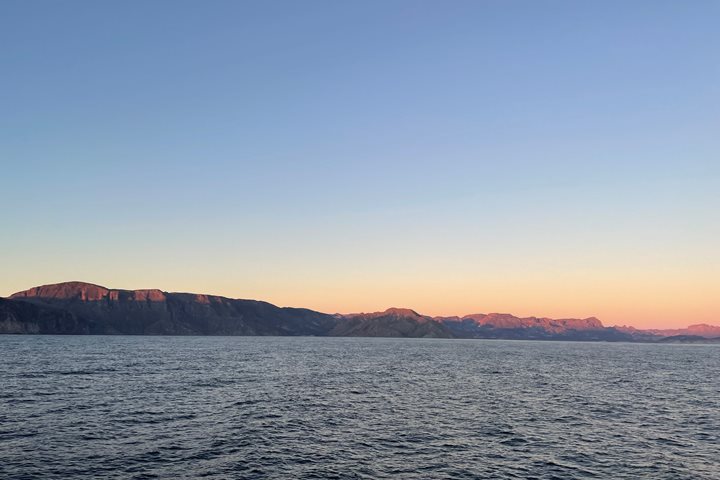Most people who’ve heard about Isla San Marcos know it from the gypsum mine that produces a fine white dust that can be seen from miles away. The gypsum has been made into wall board or sheetrock and covers many of the walls of buildings in the western United States. Most of the southern end of the island is formed of this evaporite that has naturally been precipitated from seawater.
Some of our guests started their morning on the north end of the island in an area of deeply cut canyons that wind through a multicolored volcanic landscape. This was the perfect place to depart on exploratory hikes. Algodón, or desert cotton, and palo blanco trees added verdant accents, along with brilliant-blue morning glories. Many of the northern coastline’s beaches are of coarse gravel, but a few cut back into deeply indented sandy coves. Some of these provide exciting snorkeling, especially when caves and arches beckon or lead to hidden places. Both kayaks and tours in our inflatable craft allowed other guests to merely goof around in boats. One of the highlights on our tours was a line of 50 or more California sea lions enjoying the sun’s warmth by sticking their flippers up. Sea lions have little fat or hair on their large flippers, so holding them out of the water into the sun is a comfortable way to take a snooze. A few of them are shown in today’s expedition photo.
On our way to Santa Rosalía a group of long-beaked common dolphins joined us by bow riding and surfing in our wake. A few made leaps seconds before the rapid-fire shutters of cameras were heard.
The town of Santa Rosalía acts as a hub for cars and trucks traveling along Baja California’s Highway One and others catching the ferry to Guaymas. It is also the home of a copper mine that has been active since the late 1880s and has recently been partially sold to a Korean Consortium. One inflatable boat of guests cruised out of the harbor and poked around the shoreline to the south before going into town. Sedimentary layers of stranded shorelines, beautiful sandstones blocks and coastal views were exciting to see. Once ashore again, this group visited a metal church widely believed to have been designed by Eiffel for the 1887 world fair in Paris that was interesting for us to visit. Popular stops in town also included the French Bakery, the mining museum and later in the day, the Hotel Frances for cold margaritas and beer. That was surely the social highlight judging by the cheerful chatter and camaraderie. Santa Rosalía has that authentic honesty and unpretentious feeling about it that I think most of us appreciated. Later that evening we cruised on for more adventures.

